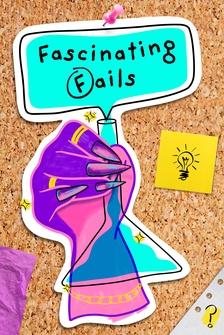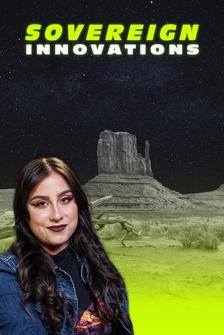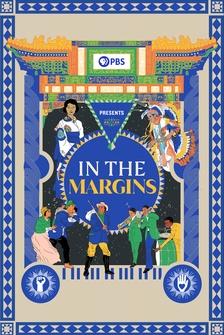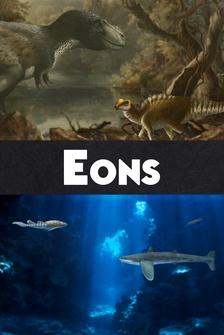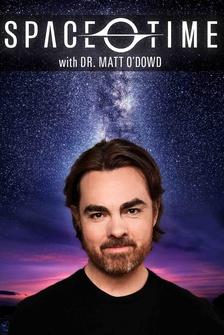- Every time I make a video about an extinct fossil creature, I'm reminded that there's a lot of confusion out there about what is and isn't a dinosaur.
And you'd be forgiven for being kind of confused.
I mean, why is this a dinosaur but this isn't?
This is, but this isn't?
And what about this, dinosaur?
No.
But maybe paleontologists are just messing with us, or maybe the question of what is and isn't a dinosaur goes deeper than we think.
Well, like an intrepid fossil hunter, I set out to dig up an answer, and what I found teaches us a lesson about how hard it is to build a picture of the past when you only have a few puzzle pieces.
And it teaches us something about why we classify things the way that we do.
(playful music) Hey, smart people, Joe here.
You might be surprised to learn just how many different types of saurs there are.
- There are lots of different groups, mostly of reptiles, that have saur in their name.
- Oh, yeah, that's paleontologist Steve Brusatte.
- I study dinosaurs and all sorts of other fossils, but primarily dinosaurs.
And I'm the author of the book, "The Rise and Fall of the Dinosaurs."
There's pterosaurs, those are the pterodactyls.
There's plesiosaurs, there's mosasaurs, and pliosaurs, and ichthyosaurs.
There's even groups like, say, lepidosaurs.
Those are still around today.
And so that's just a very common root word.
It basically means lizard.
I think it's Greek.
- It's Greek.
I looked it up.
And we can't forget everyone's favorite not a dinosaur, dimetrodon, which actually predates the dinosaurs and is more closely related to us mammals than T-Rex or any of the other saurs.
Dinosaur party?
I don't think so.
These toys are a lie.
And basilosaurus, that thing's a early whale.
Clearly, there's a tendency to call any extinct scaly thing with teeth a dinosaur, even when they're not.
But to figure out what dinosaurs are, we need to go back to when they were invented.
Okay, I mean, the ancient reptiles that we call dinosaurs, they evolved more than 200 million years ago, but the word dinosaur, that arrived around 1841, thanks to Sir Richard Owen, who is giving me some strong Argus Filch vibes.
Guys like Owen had made careers out of naming and organizing all the animals and bones that the very friendly and not at all problematic British empire was bringing to their doorstep from across the globe.
One strange bone had been pulled from a quarry in England in the 17th century, which, thanks to its odd shape, was originally misidentified as the thigh of a Roman war elephant, and then misidentified again as, oh (chuckles), yeah.
Some very posh gentlemen scientists of England eventually realized that this and other bones came from an extinct reptile, and they named it megalosaurus, meaning great lizard.
Very original, guys.
And when Argus, I mean, Richard Owen studied these and the bones of another reptile named iguanodon, he decided that they had enough traits in common to be their own group, and-- - It was Richard Owen who came up with that name dinosauria, the terrible lizards.
And then from that point on, people found more and more of these giant ancient reptilian things in rocks all around the world.
And people started to name new species and they started to classify these things as dinosaurs.
- Now, people from indigenous and other cultures around the world have been uncovering evidence of these weird extinct creatures for a long time, like this Native American rock art in Utah inspired by the footprints in the surrounding rock.
But it was posh gentleman scientists who gave them a name and began building a system to organize them.
And one of those posh gentlemen scientists influenced the way that we think about and organize living things more than any other, the Smeagol of the HMS Beagle, the acorn that planted the tree of life, my boy, Chuck Darwin.
Now, before Darwin, there were ways of putting living things into categories.
I mean, remember this?
But Darwin's world-changing idea was that things that are closely related also share ancestry, and if you follow the trail of common ancestors back far enough, everything comes down to one great common ancestor of life.
After Darwin, people didn't just sort things into different buckets based on certain characteristics or traits or features, they organized them based on a system of shared ancestry.
And how those traits or features changed over time was kind of a big deal.
So when we take Richard Owen's original definition of dinosaur and apply Darwin's new way of looking at how things are related, we get something close to our modern definition of dinosaurs.
- [Steve] Iguanodon, megalosaurus, you take them, you go down to their common ancestor, and anything that falls within that part of the tree is a dinosaur.
- Now, the shape of this tree has changed and will continue to change over time as scientists find new dinosaurs with new traits that are related in new ways.
But the tree always stays rooted in that common ancestor.
So, how do we decide if something goes on the tree?
Well, there are a few general rules.
Swimming things, they're not dinosaurs.
Flying things, also not.
And if the thing crawls around like this, chances are, it's not a dino, either.
But to really map out those branches, scientists use long lists of traits and characteristics, I mean, enough to fill textbooks that they can measure and then plug into computer algorithms and figure out not only if a new fossil belongs in the dinosaur group, but what sub-branch and sub-sub-branch it belongs to on this tangled tree that grew from that common ancestor.
We don't even know for sure what that common ancestor was, and it wouldn't have been too different from its closest relatives that aren't dinosaurs.
But everything that descended from that thing is a dinosaur, because that's what we say a dinosaur is.
And this is where it gets kind of weird, because there's nothing in nature that says a dinosaur has to be this.
It's just a convention.
It's an agreement.
It's the same way a baseball game only works because everyone agrees to play by the same rules.
I mean, think of borders on a map.
The boundary separating Northern Illinois from Indiana is a made-up thing.
It's only a line with cornfields on both sides.
Nothing in nature that says the boundary has to be here.
It could be here or here.
But because a group of people agreed to put it here, and everyone agrees that the boundary is here, it's a useful made-up thing.
It lets us group things together and lets us separate things.
And it lets us organize things within these boundaries.
And just like a state or national boundary, the definition of a dinosaur is something that we made up.
We also made up definitions for pterosaurs, plesiosaurs, and all the other saurs and not-a-saurs.
But even though they're made up, they're useful.
And even though the details of the definitions can change over time, everyone agrees to change with them.
And that is what lets science happen.
So a dinosaur is a pigeon and a triceratops and all of the descendants of their most recent common ancestor, thanks to a guy named Richard Owen, a dude named Charles Darwin, and that thing.
- You can easily imagine a world where, in the Victorian times in England, some other well-connected, wealthy, posh, high-society person discovered a beautiful skeleton of, say, a pterodactyl.
You could see how Richard Owen, when he came up with the term dinosaur, may have included the pterodactyl in his list of dinosaurs.
Then the convention would have been different.
And the definition that we eventually put on the dinosaur group using the family tree would have included pterodactyls.
It's easy to imagine how little changes in the history of how we discover and study things have big effects on how we later classify and define things.
- So maybe somewhere out there in the multiverse, there's a world where pterodactyls are dinosaurs.
And even if the science they do there is a little bit different from ours, as long as everyone agrees, it's just as valid as the science that we do here in this universe.
Except for this guy.
I don't care what universe you're in, still not a dinosaur.
That's just wrong.
Stay curious.




